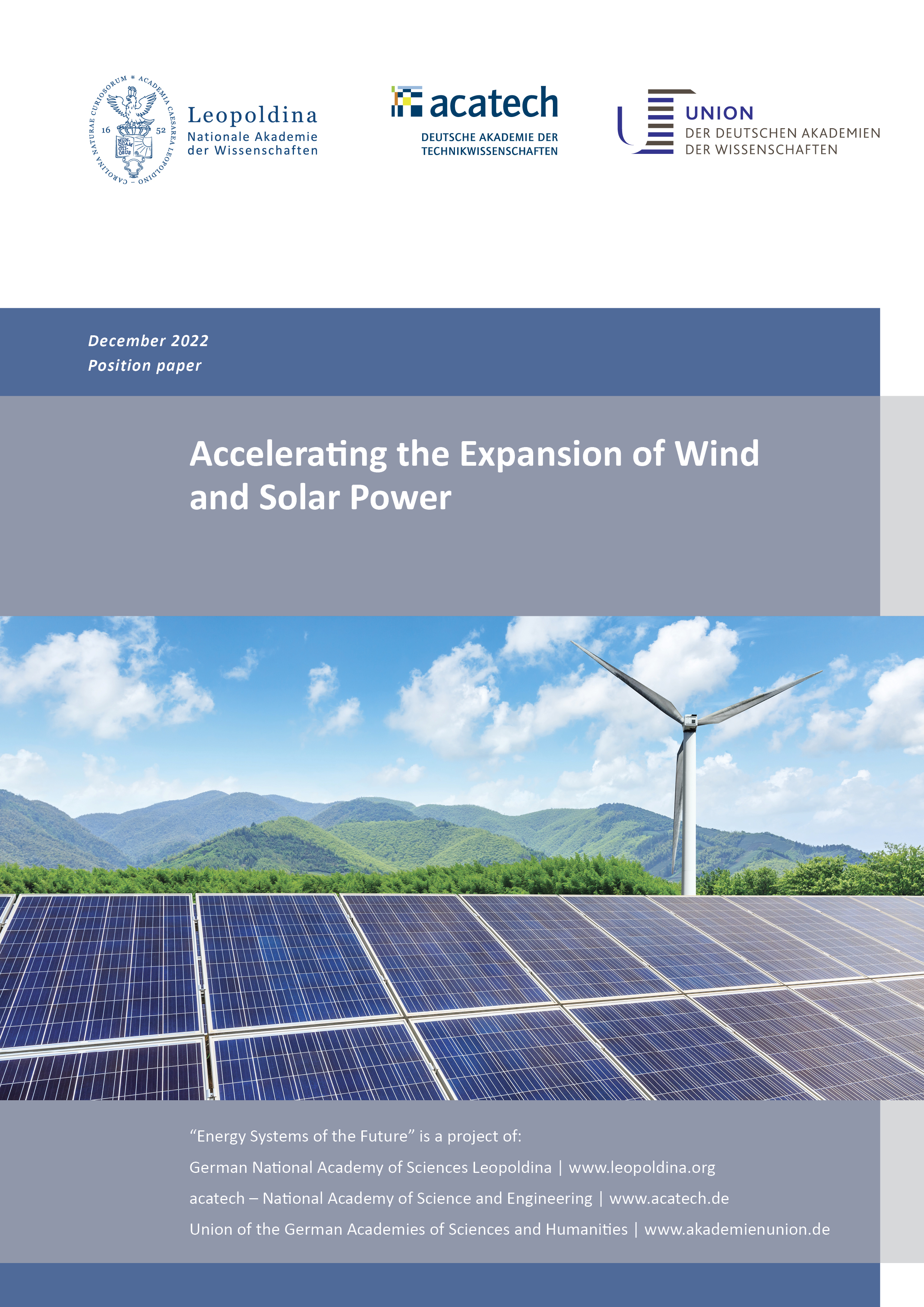Renewables are set to become the main pillar of our energy system in the not too distant future. At the same time, a sharp rise in demand for electricity is expected in sectors such as heating and transport. Consequently, the number of new installations will need to grow significantly faster than in the past.
In the position paper “Accelerating the Expansion of Wind and Solar Power”, a working group of the Academies’ Project “Energy Systems of the Future” (ESYS) analyses barriers to the implementation of renewable energy projects and formulates a series of concrete policy options for removing them.
The experts identify four key policy areas:
- Transforming planning and licensing processes: A proactive planning culture incorporates the national and Länder-level growth targets into the regional planning process. Ensuring clear and consistent nature conservation criteria and increasing staffing levels in the relevant authorities can help to expedite planning and licensing processes.
- Promoting public acceptance by strengthening a proactive planning culture through participation: Public acceptance can be strengthened through greater public participation from an earlier stage coupled with the financial involvement of local authorities and residents. Participatory processes should seek to unlock citizens’ positive creative potential and ensure that the energy transition is experienced as a worthwhile collective undertaking.
- Making more land available and promoting efficient and multiple space use: National and Länder-level targets for the amount of land made available can help to ensure that sufficient land is designated for wind and ground-mounted PV installations. Multiple space use can be supported by tapping into the potential of solar panels on suitable building roofs and promoting agrivoltaics and floating PV.
- Fully aligning the energy system with renewables: It will be necessary to modify the electricity supply’s technical infrastructure and regulatory framework to reflect the fact that, in the future, most electricity will be generated from solar and wind power. This will help to ensure that wind and solar installations can contribute to grid stability. It will also be necessary to determine the extent to which dependencies on imported renewable energy technologies pose a threat to the energy transition and how this threat can be countered.
acatech/Leopoldina/Akademienunion (Ed.): Accelerating the Expansion of Wind and Solar Power (Series on Science-Based Policy Advice), 2022. ISBN: 978-3-8047-4253-6




